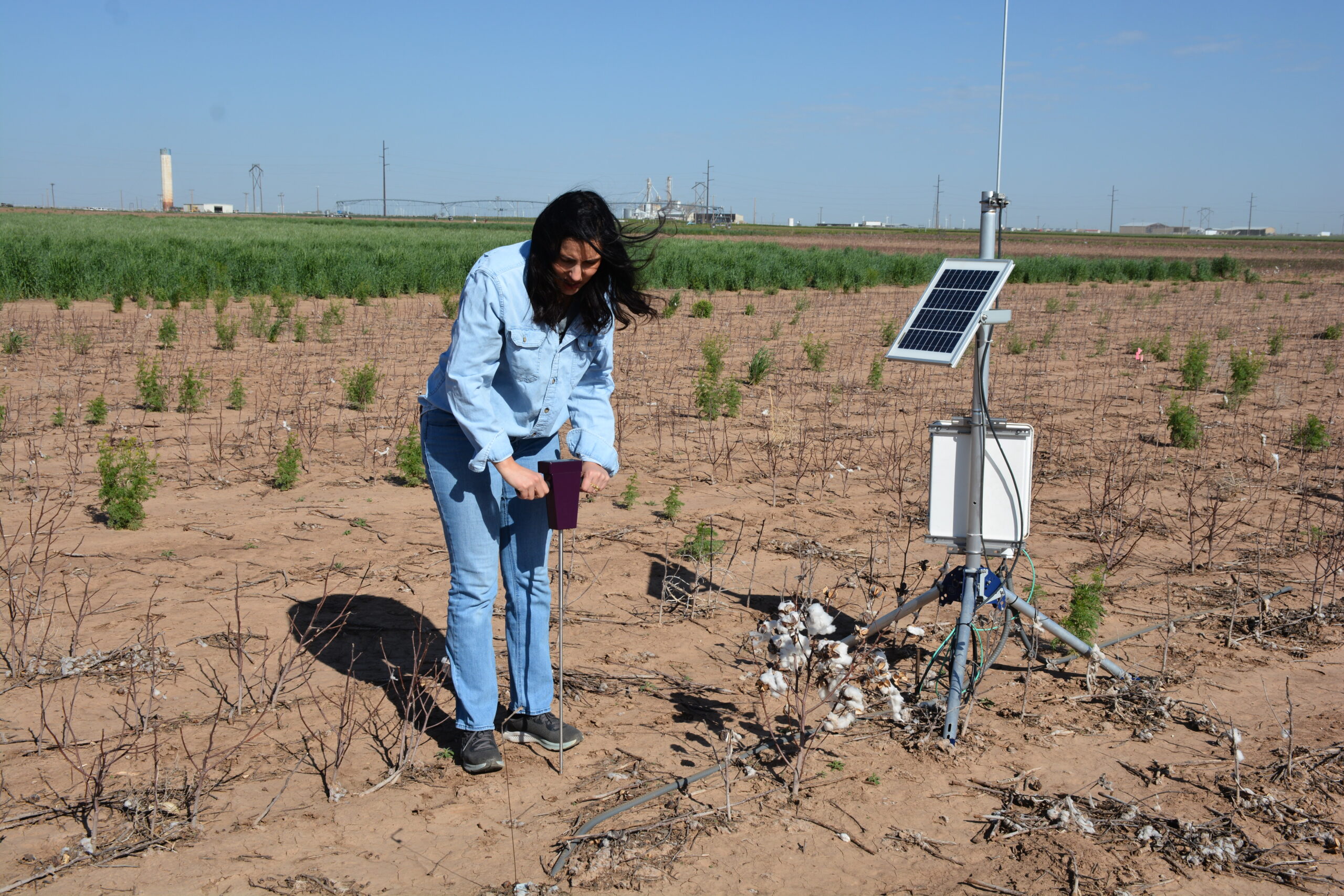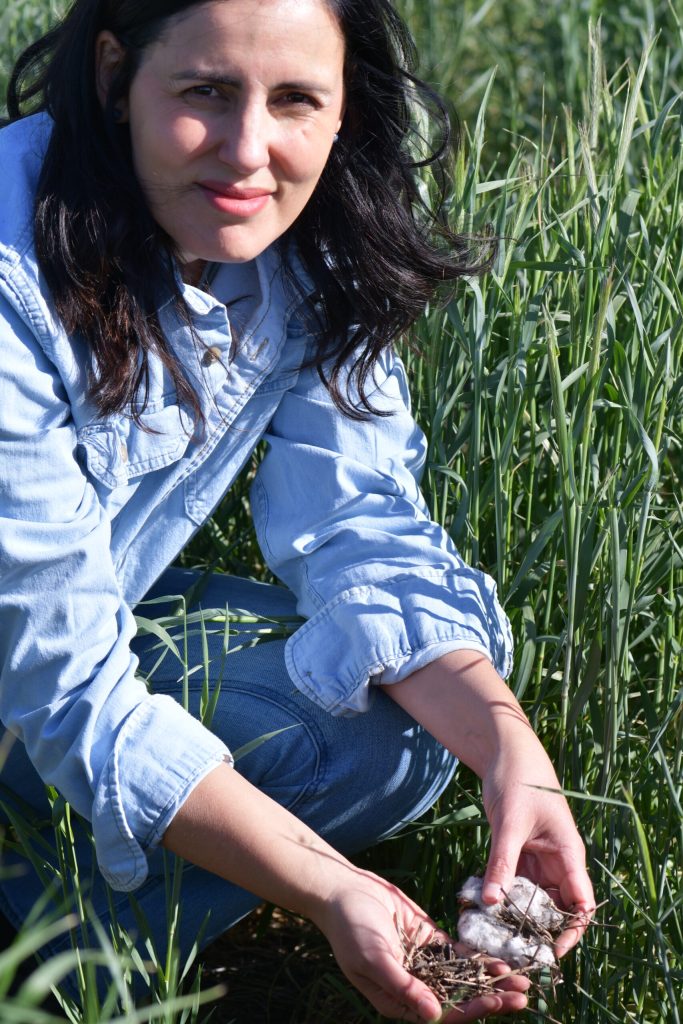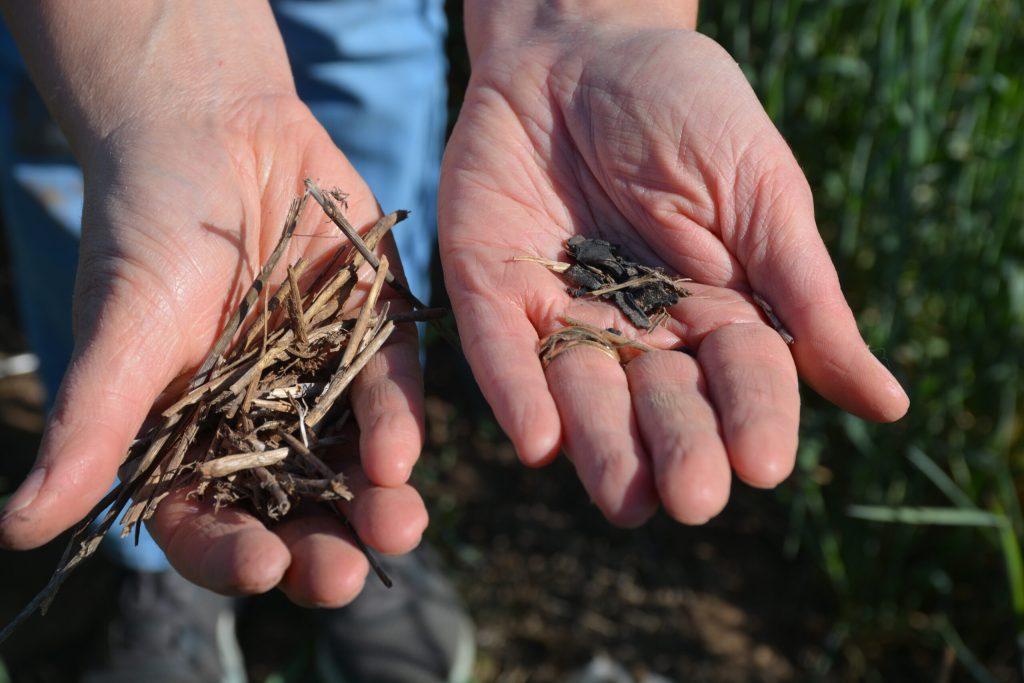AgriLife Research soil scientist tackles semiarid environment
May 12, 2025

Studying soil carbon dynamics in a semidesert agroecosystem like the Texas High Plains might seem an unexpected place for a scientist who grew up in a city in tropical Brazil.

But Carolina Brandani, Ph.D., is committed to connecting soil conservation with agricultural practices as a new Texas A&M AgriLife Research soil scientist in Amarillo and an assistant professor in the Texas A&M College of Agriculture and Life Sciences Department of Soil and Crop Sciences.
Brandani knew she wanted to work with plants when she entered college but had no agricultural ties. As an undergraduate student, she was encouraged to study soils, and it turned into a passion.
“I’m from an urban area of more than 700,000 people, so I was never really exposed to agriculture and environmental science until I got to the university,” Brandani said. “People in cities often don’t realize the soil under their feet is so important — whether it is shrinking under their homes and causing cracks or something else.”
She earned her bachelor’s degree in forest engineering and a master’s in soil and plant nutrition from the Federal University of Viçosa, and a doctorate in soil science from the Luiz de Queiroz College of Agriculture, University of São Paulo, Piracicaba, Brazil.
Brandani spent the past four years as an associate research scientist at the Texas A&M AgriLife Research and Extension Center at Amarillo. That time helped her understand the soil situation in the Texas High Plains.
The top layers of soil contain carbon and the nutrients necessary to grow crops, she said. And because the soil in the High Plains is low in organic matter and carbon, producers must continuously build that back up to grow productive crops.
“We lose a lot of soil when we have these crazy winds,” she said. “Better agricultural practices help us minimize the loss of our soil and can restore soil nutrients.”
Wind erosion destroys soil aggregates, which Brandani said are essential for carbon storage. Soil aggregates are formed as soil particles – clay, sand, silt – tie to each other and organic matter through chemical bonds that act like glue. These aggregates form micropores and macropores that store water and are an indicator for soil health assessments. For example, soil with low aggregation is compacted and plant roots cannot find a way to nutrients and water.
Brandani’s research includes using agricultural byproducts, including beef and dairy manure and cotton gin trash, as soil amendments to improve soil health.

She tests soil amendments in dryland cotton cropping systems and limited irrigated forage sorghum. Her initial experiments include applying biochar made from cotton gin trash as a soil amendment in dryland cotton cropping systems to improve rainfall harvest and soil health metrics.
She is also working on the Dairy Net-Zero project evaluating the effects of dairy manure applications in limited irrigated forage sorghum on greenhouse gas emissions, soil health and soil water balance. She plans to expand her research program on developing studies to regenerate soil health and forage production in semiarid rangelands.
Cotton plants, for instance, do not leave enough organic matter on the ground due to the lack of plant residues left behind in the fields, Brandani said. Soil amendments would provide more organic matter to replace what is lacking in surface residue.
“We are interested in how these amendments can help capture more water, improve the soil health indicators and help dryland cotton production,” she said. “Soil health indicators can show a fast change, even seasonality. This information is important for producers and researchers to target beneficial practices.”
Some other possible commodity leftovers that could be used as amendments are peanut residues and offal from livestock processing plants.
Additionally, Brandani’s research will look at processing technologies like biochar that can be applied to the products to provide balanced nutrient availability to crops.
“We need to ensure the nutrients that might be offered in the raw product are balanced, and we need to make sure they are physically homogeneous for commercial production,” she said.
The semiarid environment of the High Plains presents a new way to connect her research to different soils and ecosystem resources, which are totally different from the tropical environment and soils she grew up in and started her studies on.
The High Plains soils are also different from other soil types in Texas – with each soil type having different levels of nutrients and organic matter, soil pH, and, consequently, different amendment/nutrient requirements.
For instance, acidic soil pH, an issue in Brazil and East Texas, makes some nutrients unavailable to plants, so it must be managed. But that management practice is not needed in the High Plains, where the soil is mostly alkaline. The low annual average precipitation of 12-14 inches in the Texas High Plains is much lower than in tropical regions receiving 35-50 inches per year on average.
“That impacts the amount of plant production, plant residues left on the soil surface, which potentially help protect the soils and improve nutrient cycling,” Brandani said. “Also, the drastic temperature and wind are factors that must be considered here.”
She has started the Semi-Arid Soil Health Working Group with colleagues in Lubbock, New Mexico, Kansas and Oklahoma to look at soil health in semiarid environments. They will concentrate on their similar environmental conditions and challenges to work together to address challenges in their states as an important production region, she said.
“We want to help farmers in the Ogallala Aquifer region adopt soil and water conservation management strategies that enhance water-use efficiency, increase farm profitability and improve soil health.”
PHOTO: Carolina Brandani, Ph.D., a Texas A&M AgriLife Research soil scientist, with-equipment. (Kay Ledbetter/Texas A&M AgriLife)
TAGS:
agricultural byproducts, Carolina Brandani Ph.D., soil health, Soil maintenance, Texas A&M AgriLife Research
Search
RECENT PRESS RELEASES
Related Post




